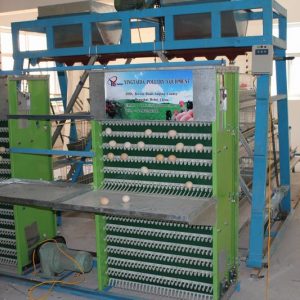
There are many reasons for the low fertilization rate of breeders
In the production process, farmers generally pay attention to the routine immunization of breeders and the selection of breeding roosters, but often ignore some details in the insemination process. As a result, the fertilization rate of breeders is low while all the test indicators are qualified. The author discusses the laboratory diagnosis process, treatment measures and prevention of the case
A certain chicken farm reported to the laboratory that five chicken coops in that farm had low fertilization rates for several months.
1 clinical symptoms
There are about 2000 hens in each hen house, about 100 roosters, and males and hens about 40 weeks old, with no obvious clinical symptoms, reasonable immune procedures, and normal egg production.
2 laboratory diagnosis
2.1 Serological diagnosis
In five chicken houses with low fertilization rate, 16 blood samples were collected in each house, and a total of 80 blood samples were collected in five houses.
2.1.1 Use hemagglutination inhibition test to detect antibodies such as ND, H5, and H9. After testing, its antibody level is above 7 log2 (5 log2 is qualified).
2.1.2 Using plate agglutination test: detection of Salmonella. No abnormalities of Salmonella were found after testing, and all were negative.
According to the above diagnosis results, the antibody level of the chickens is high and all Salmonella bacteria are negative, and no suspicious circumstances are found in the hens.
2.2 Semen Test
Randomly collect the semen of 10 cocks from 100 cocks in each coop. A total of 50 semen were collected from five buildings.
2.2.1 Appearance quality inspection.
2.2.1.1 Ejaculation volume: Use a graduated semen collection cup to measure and collect semen. The selected male males should average 0.6-0.8ml.
2.2.1.2 Semen color: Normal fresh rooster semen is milky white. The higher the semen density, the more milky white, the lower the semen density, the lighter the color. Those mixed with blood are pink; those mixed with feces are yellow-brown; those mixed with urate are white cotton wool; those mixed with clear fluid are clear water; those with disease and no sperm are yellow water. In short, anyone with abnormal color should not be used for insemination.
2.2.1.3 Inspection results:
(1) Ejaculation volume: The volume of ejaculation of 50 males is normal.
(2) Semen color: 44 samples were normal, 6 samples were light in color, no other abnormalities.
2.2.2 Microscopic examination
2.2.2.1 Semen density: put the microscope in a special incubator, magnify about 400 times at a temperature of 41-42 degrees Celsius for inspection.
2.2.2.2 Density estimation method: firstly mix the semen, take a clean glass slide and drip a drop of semen with a sterile pipette at one end, and then add a cover glass (requires no bubbles) and place it at 400 times Check under the microscope (note that the microscope stage must be flat). Adjust the microscope to the dark field for observation. According to the density of sperm in the field of view, it is roughly divided into three levels: “dense”, “medium” and “dilute”.
“Dense”: It means that under the microscope, the entire field of view is completely occupied by sperm, and the space between the sperm and the movement of a single sperm are almost invisible. The vigorous semen is like a rolling cloud. At this time, the density of sperm per milliliter is more than 4 billion.
“Middle” means that there is an obvious gap equal to the length of a sperm between the sperm in the field of view, and the movement of a single sperm can be seen. At this time, the sperm density is 2 to 4 billion per milliliter.
“thin” refers to the large gap between sperm in the field of vision, which can accommodate two or more sperm, and the density of semen is less than 2 billion per milliliter. Try not to use such semen.
2.2.2.3 sperm motility
There are three types of sperm movement: linear movement, rotational movement, and in-situ swing. Evaluation of sperm motility is based on the proportion of sperm moving in a straight line. Sperm motility is usually evaluated by a ten-level system, that is, 10 spermatozoa have one linear motion as the first level; two linear motions are the second level; and so on to the tenth level; only the sperm with linear motion can be fertilized, linear motion The more you have, the better your vitality. Generally, sperm motility and semen density are checked at the same time. During the examination, the sperm movement was wavy or tumbling like a cloud, which is a high concentration of semen. Circular movement may be caused by swelling of the small head; rotation in place and bending left and right are signs of too weak sperm; non-movement of sperm is dead sperm; sperm agglutination is caused by feces contaminated semen.
Check the sperm motility to pay attention to the following points:
1) A correct judgment can only be made after a lot of observation.
2) When making microscopic samples, do not have too much semen, it is better to cover the cover glass without overflowing, and there should be no bubbles.
3) It is best to observe in dark field during inspection.
4) Carry out at a temperature of 40-42°C.
5) Check immediately after semen collection.
6) Shake the semen test tube, and after mixing it, take another drop of semen and check the temperature.
2.2.2.4 Laboratory results



